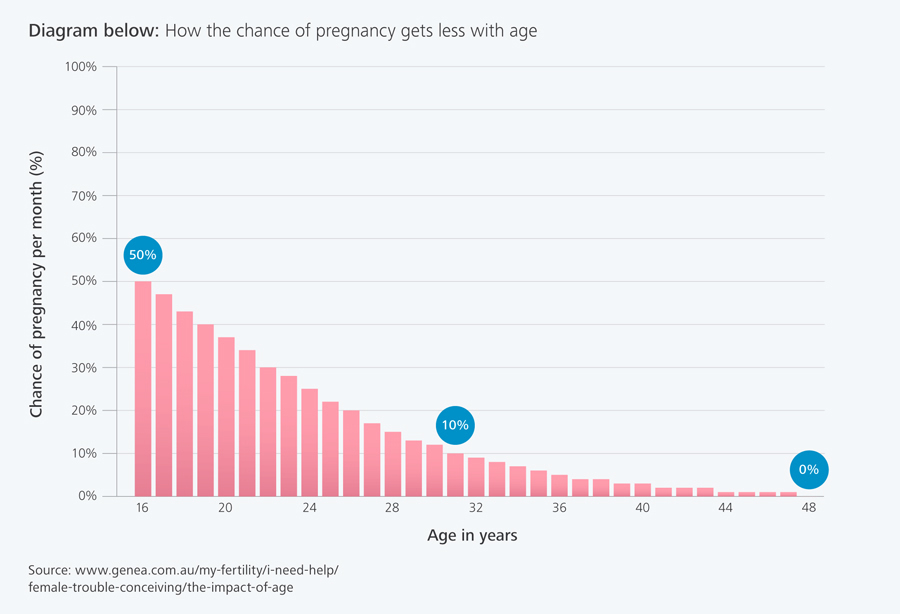Introduction to cancer, fertility and the reproductive system
This section has information to help you understand how cancer treatment may affect fertility.
Cancer is the name given to diseases caused by the body’s cells dividing without stopping, forming growths and moving into parts of the body where they are not needed. As a result people with cancer need to have treatments.
Cancer treatments aim to remove the cancer and prevent it from coming back. The main treatments for cancer are chemotherapy, radiotherapy, surgery, hormone therapy and targeted drug therapy. Many people will have two or more of these treatment options as part of their care.
Most cancer treatments have side effects caused by the treatments affecting healthy tissue. Many side effects last for a short time during and after treatment. Some side effects last longer and can affect a person’s health for the rest of their life. In women, one of these side effects can be lowered fertility which means that a woman may not be able to get pregnant in the future.
Fertility means being able to get pregnant (conceive) naturally. The parts of a woman’s body that are involved in fertility are called the ‘reproductive system’.
The female reproductive system

The key parts of the reproductive system are:
1) Ovaries – these two organs sit on either side of the womb inside a woman’s body between her hips (pelvis). The ovaries make the eggs and hormones needed to have a baby. These eggs travel down the fallopian tubes to the womb.
2) Egg (oocyte) – the female reproductive cell, which after fertilisation with sperm is capable of developing into a baby.
3) Fallopian tubes – the two tubes that connect each ovary to the womb (uterus) and this is where the egg is fertilised by the man’s sperm.
4) Womb (uterus) – this sits inside the pelvis and is where the pregnancy develops.
5) Cervix – the opening to the womb which allows menstrual blood to leave the body (periods), and the woman to give birth.
6) Vagina (birth canal) – the opening between the lower part of the cervix and the outside of the body.
7) Vulva – the outside area of the vagina.
Women are born with a large number of eggs in their ovaries. Women cannot grow or make new eggs. The number of eggs a woman has at any point in time is known as her ovarian reserve.
By the time a woman reaches puberty, the number of eggs a woman has is falling all the time. Before puberty this is because many of the eggs waste away and become absorbed by the body.
When a woman reaches puberty, one egg is released each month from the ovary (called ovulation) and travels to the womb. The other eggs that began to mature during this cycle will break down and also be absorbed by the body.
Pregnancy occurs if the egg is fertilised by a sperm, and then implants in the womb. If a fertilised egg does not implant in the womb, the lining of the womb is shed and leaves the body. This results in bleeding known as menstruation or a period.
Age is one of the biggest things affecting the chance of getting pregnant. The number and quality of eggs lowers as women get older.
This fall in the number and quality of eggs lowers fertility and may make it harder to become pregnant. Eventually, there are so few eggs that women become infertile (unable to get pregnant), monthly menstrual periods stop, and the menopause begins. The menopause signals the natural end of a woman’s reproductive years.
Female fertility may be different for each person. The exact age a women will no longer be able to have children can be different for each individual.
As the diagram below shows, a 22 year old woman has about a 30 in 100 chance (30%) of becoming pregnant every month that she attempts to conceive a child; whereas a 43 year old woman has about a 3 in 100 chance (3%) of becoming pregnant per month.
Most women reach the menopause by their mid-50s; they stop having periods and are unable to have children naturally.

Other than age, fertility in women can also be affected by:
- Problems in the womb. For example, fibroids.
- Diseases which cause scarring in the pelvic area. For example, pelvic inflammatory disease, endometriosis.
- Diseases which affect ovulation. For example, polycystic ovary syndrome.
- A low sperm count in the male partner.
- Medicines and treatments. For example, chemotherapy, radiotherapy, or surgery for cancer, some drugs to treat mental health illnesses and regular and long term use of non-steroidal anti-inflammatory drugs.
- Lifestyle. For example, being over or under weight, recreational drugs, alcohol and smoking.
On average, around 16 in 100 (16%) couples without cancer will have fertility problems. If having children in the future is important to you, talk to your cancer care team and fertility care team before starting cancer treatment.
Recommended source of information
NICE (National Institute for Health and Care Excellence) is an organisation that is separate from the NHS. They create guidelines by looking at the research carried out to treat illness and deliver care for healthcare professionals in England and Wales.
They have created guidelines on fertility preservation for women diagnosed with cancer (CG156- Fertility problems: assessment and treatment); and guidelines on fertility preservation for teenagers and young adults (QS55- Cancer services for children and young adults: fertility support).
For more information visit the NICE website: www.nice.org.uk










